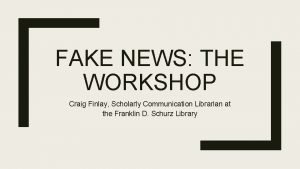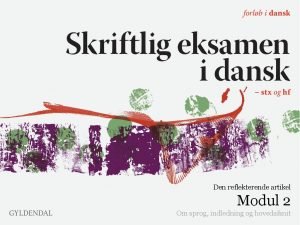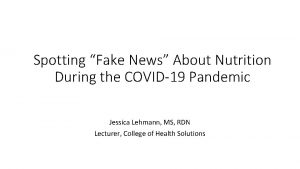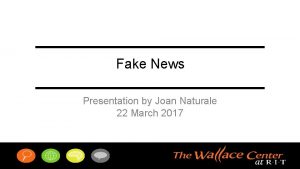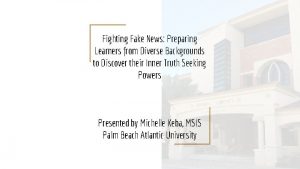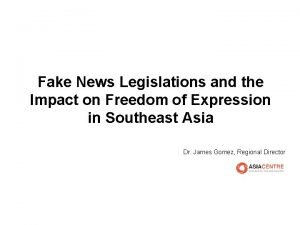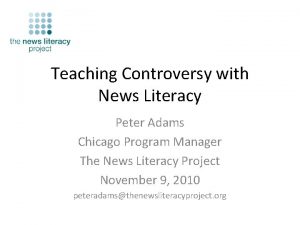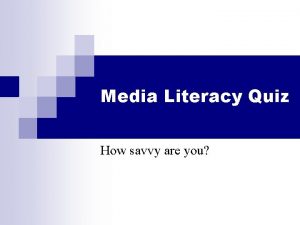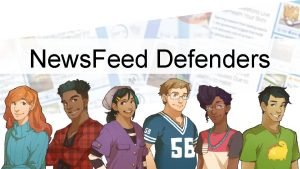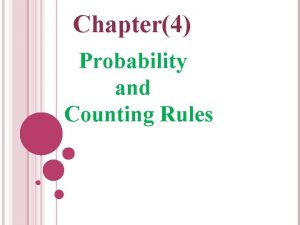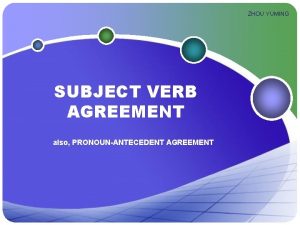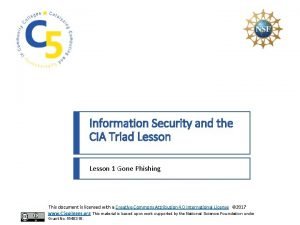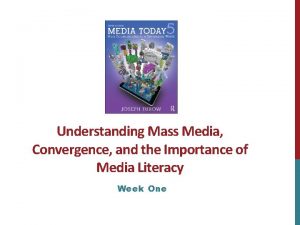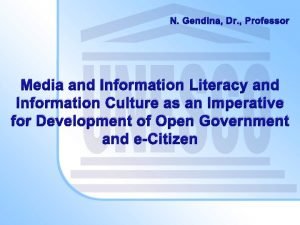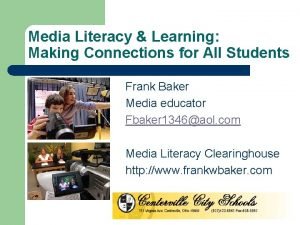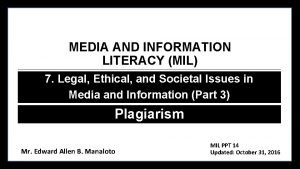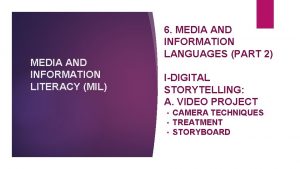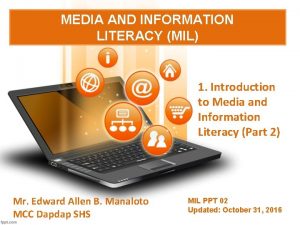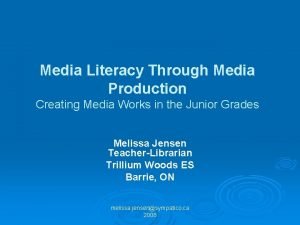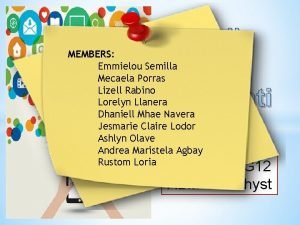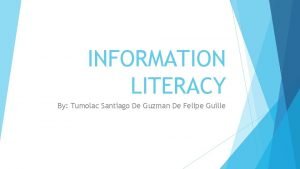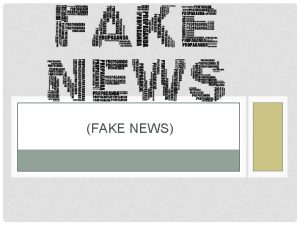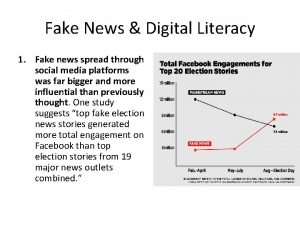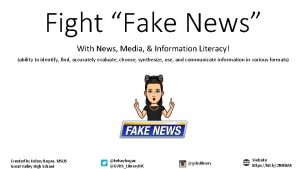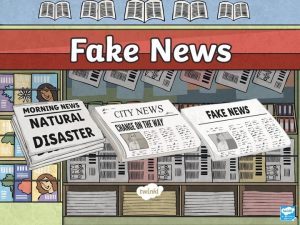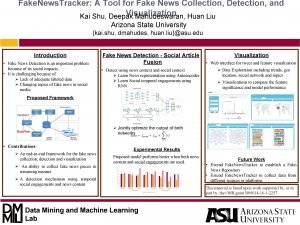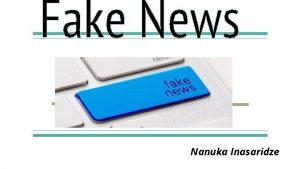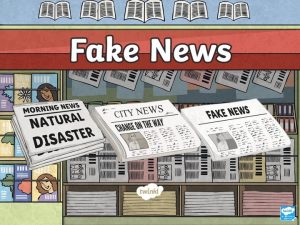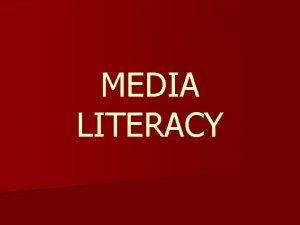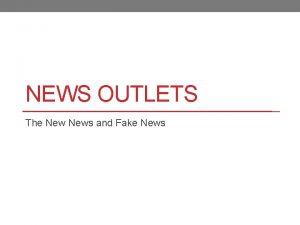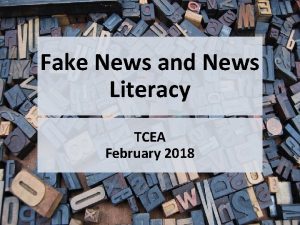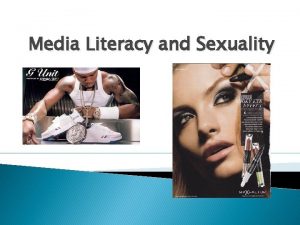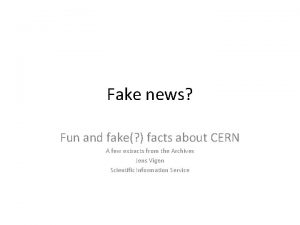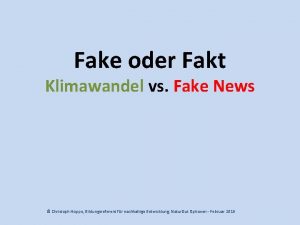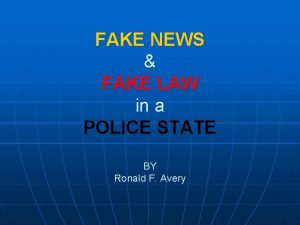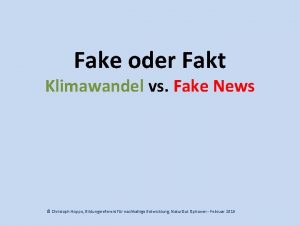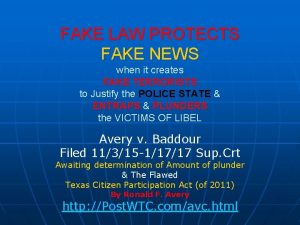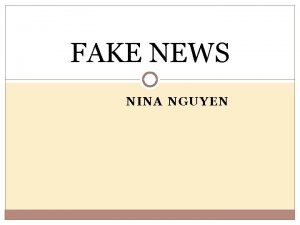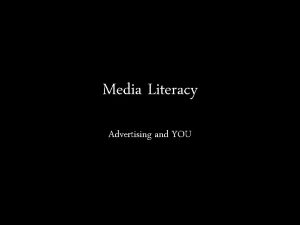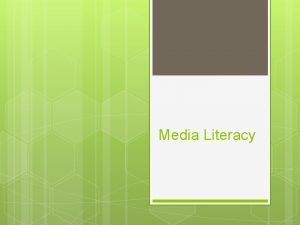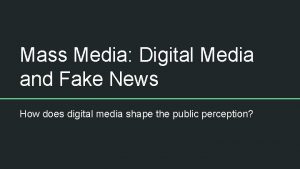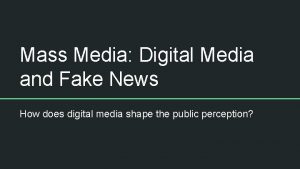Foiling Fake News A Media Literacy Workshop Fake















![[can we get the thing T was fooled by? ] [can we get the thing T was fooled by? ]](https://slidetodoc.com/presentation_image/39d859abd5ac936d7e3d28089f663ac6/image-16.jpg)













- Slides: 29

Foiling Fake News: A Media Literacy Workshop

Fake or Not?



What is Fake News? Fake news is a type of hoax or deliberate spread of misinformation (false information), be it via the traditional print or broadcasting news media or via Internet-based social media. To qualify as fake news, a story has to be written and published with the intent to mislead in order to gain financially or politically.

It’s going to take all of us to stop the spread of fake news! Before you share think about the following…

Consider the Source Fake news can slip into your life in many ways. Be wary of sponsored content, suggested posts, and third party advertising…even on trusted sites Does a quick search for the name of the website raise any suspicions? Be careful of sites with names similar to those you trust, for example ABCnews. com. co is a fake news site which mimics the URL, design and logo of the actual news site ABCnews. com


Consider the Source Is there an author’s name attached to this piece? Go to the website’s “About” section: Does the site describe itself as a “fantasy news” or “satirical news” site? Does the “Contact Us” section include an email address that matches the domain (not a Gmail or Yahoo email address)?


Watch for Emotional Manipulation Fake news uses aggressive wording, wish-fulfillment, and other forms of emotional manipulation Watch for excessive punctuation (!!!), ALL CAPS, and hyperbolic words like “EPIC, ” “DISGUSTING, ” or “UNBELIEVABLE” Exaggerated headlines are written to play into your hopes, fears, and biases—if you feel a headline is pushing you to agree or disagree with it, dig deeper before you share


Read Beyond the Headline Anyone can claim anything in a headline. It’s within the article that these claims must be backed with evidence Take a second to look at the article before you share: is it supported with facts, citations, and quotations? Do the citations come from trusted sources? Be wary of claims about containing a secret or telling you something that “the media” of “the government” doesn’t want you to know


Check the Date Undated material and old stories regularly make the rounds on social media Old and debunked stories can crop up years later Look for a date and make sure the story is current before you share
![can we get the thing T was fooled by [can we get the thing T was fooled by? ]](https://slidetodoc.com/presentation_image/39d859abd5ac936d7e3d28089f663ac6/image-16.jpg)
[can we get the thing T was fooled by? ]

Look for Other Sources Fake news articles make big claims, but don’t often cite the sources of their information. Ask yourself: Does the article cite a variety of sources, including official and expert sources? Does the information appear in reports from other news outlets?


Fact Check claims on a fact-checking site such as: Snopes. com Fact. Check. org Politi. Fact. com


REMEMBER: It is easy to clone an existing website to fool people. Bots are extremely active on social media and are designed to dominate conversations and spread propaganda. Fake news and other misinformation often use a real image from an unrelated event. Debunk examples of misinformation whenever you see them. It’s good for democracy!

What Can I Do to Foil Fake News? Apply the tools you learned today Check the source Watch for emotional manipulation Read beyond the headline Check the date Look for other sources Fact check Share the tools with everyone you know Teach these tools to your children Call it out when you notice something suspicious

Fake or Not?





Sources This information was collected from: The News Literacy Project - http: //www. thenewsliteracyproject. org/ Proquest - http: //blogs. proquest. com/wpcontent/uploads/2017/01/Fake-News 1. pdf

Thank You! Democracy Day: A Public Reading and Celebration of the Constitution Saturday, May 20, 10: 00 AM – 1: 00 PM, Main Library, Joan Lorentz Park Come join us in celebrating our Constitution! There will be a participatory reading of the Constitution, plus performances, activities and more! Families welcome, picnics encouraged. Supreme Court Justice Breyer will also be giving a 30 minute talk on the Constitution in the Lecture Hall at 1: 15 PM An Evening with Dr. Daina Ramey Berry Thursday, June 29, 6: 30 PM, Main Library, Lecture Hall Dr. Ramey Berry is an Associate Professor, Department of History in African History and African Diaspora Studies at the University of Texas at Austin. Her book, A Price for Their Pound of Flesh explores the economic value of enslaved people through every phase of their lives – including from before birth to after death – in the American domestic slave trades.
 Venn diagram of media information and technology literacy
Venn diagram of media information and technology literacy Mil subject
Mil subject Definition of people as media
Definition of people as media Craig finlay
Craig finlay Reflekterende artikel eksempel
Reflekterende artikel eksempel Fake news about nutrition
Fake news about nutrition Fake news
Fake news Fake news ppt
Fake news ppt What does sanctioned countries mean
What does sanctioned countries mean Fake news
Fake news Fake news
Fake news Cyber literacy for the digital age
Cyber literacy for the digital age Peter adams news literacy project
Peter adams news literacy project A b c d question media
A b c d question media Newsfeed defenders mini quiz
Newsfeed defenders mini quiz Hard news vs soft news
Hard news vs soft news Chapter 4 probability and counting rules answer key
Chapter 4 probability and counting rules answer key Both of the statues on the shelf is broken
Both of the statues on the shelf is broken 4. how do fake social media accounts breach the cia triad?
4. how do fake social media accounts breach the cia triad? Importance of media convergence
Importance of media convergence Opportunity and challenges in media and information
Opportunity and challenges in media and information Mind map about media and information literacy
Mind map about media and information literacy Media literacy benefits
Media literacy benefits Plagiarism in media and information literacy
Plagiarism in media and information literacy Mil media and information languages
Mil media and information languages Importance of media and information literacy poster
Importance of media and information literacy poster Access in media literacy
Access in media literacy Poster making about media literacy
Poster making about media literacy Clay tablets pre industrial age
Clay tablets pre industrial age Disaster scenario media and information literacy
Disaster scenario media and information literacy



